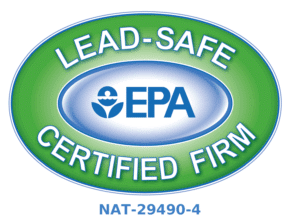It’s confession time. This is my basement, before Evergreen came along. You might be impressed that my 1856 basement has a vapor barrier. I sure was, until I learned a thing or two about vapor barriers and realized that whoever installed mine did it all wrong.
This piece of plastic only covers the floor. A good vapor barrier extends up the walls to protect against all moisture, whether it evaporates up through the ground or weeps in through the foundation.
This piece of plastic is just sitting on the ground, weighed down by a couple of spare rocks. Moisture doesn’t have to work very hard to go around that – as you can see by the puddles that formed on top of this “barrier.” A good vapor barrier is sealed to the foundation wall with spray foam insulation to ensure that the barrier is complete. In other words, in basement encapsulation, the spray foam acts not just as an insulator, but also as an adhesive.
This piece of plastic is taped to the support posts, so any moisture that’s too lazy to go around can just travel right into the posts. Over time, that moisture will lead to rot and serious structural problems. A good vapor barrier goes underneath the posts – as well as under the stairs, the heating system, the oil tank, and everything else – to create a true capillary break. The point is, basement encapsulation should totally encapsulate your basement – no exceptions.
I call this post a confession because, now that I know how a basement should be treated, I’m embarrassed that I paid someone it do it wrong. But I’m not the one who should be embarrassed.
Building science is complicated. If someone tells you it’s simple, or cheap, or something every contractor thinks about, think again. And then call Evergreen. I can’t tell you how relieved I am to know that my basement is finally being treated right. I can’t wait to show you what it looks like.






